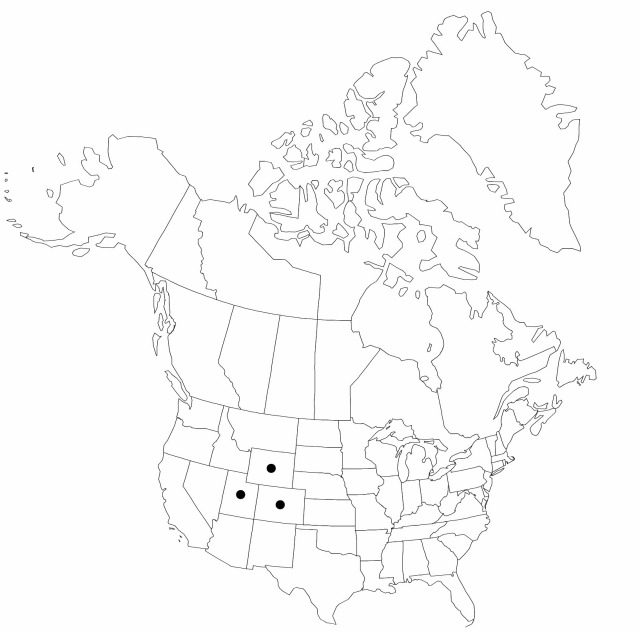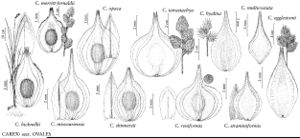Carex egglestonii
Bull. Torrey Bot. Club 42: 614. 1915.
Plants densely cespitose. Culms 33–72 cm. Leaves: sheath adaxially white-hyaline or brownish tinged, occasionally only in very narrow band extending 2.5 cm proximal to collar; summit usually U-shaped; distal ligules 1–2.5(–3.5) mm; blades 3–4(–5) per fertile culm, 15–30 cm × (2.8–)3–4.5 mm. Inflorescences dense, green and brown, gold and brown, or light brown, (1.7–)2–3 cm × 15–21(–27) mm; proximal internode (2–)3.5–7(–11) mm; 2d internode 2–5 mm; proximal bracts bristlelike, shorter than inflorescences or occasionally leaflike. Spikes 4–5, distant, distinct, broadly ovoid, 11–16 × 6–12 mm, base rounded to attenuate, apex acute to truncate. Pistillate scales gold, red-brown, or chestnut-brown, sometimes with green to gold midstripe, lanceolate to broadly ovate, 4.7–6.7 mm, shorter and narrower than perigynia, margin white 0.1–0.2(–0.4) mm wide, apex acute to acuminate. Perigynia ascending or appressed-ascending, green to gold, veinless on each face or, occasionally, 6-veined abaxially, broadly ovate, usually flat except over achene, (5.5–)6–7.2 × 2.7–3.8 mm, 0.5–0.7 mm thick, 1.8–2.3 times as long as wide, margin flat, including wing 0.5–1.1 mm wide, ciliate-serrulate at least distally; beak red-gold to red-brown, sometimes white-hyaline at tip, flat, ± ciliate-serrulate, abaxial suture with conspicuous white margin, distance from beak tip to achene 3–4.3 mm. Achenes broadly ovate to broadly elliptic, (1.8–)2–2.3 × (1.1–)1.3–1.6 mm, (0.4–)0.5–0.7 mm thick.
Phenology: Fruiting summer.
Habitat: Dry, open areas
Elevation: 2400–3700 m
Distribution

Colo., Utah, Wyo.
Discussion
Selected References
None.
